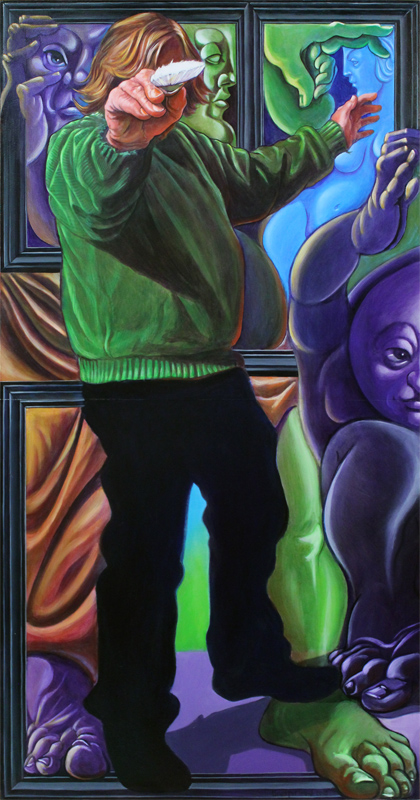
Original post April 6, 2016
My brother Pat and I were kids in the 1950s. It was a time before computers and cell phones, and for my family, even (mostly) for television. We would not have a TV set at our house until I was in high school. I went to Jim Perlinski’s house most afternoons to watch the Three Stooges, but that was pretty much my TV experience.
Lots of things in those days came in wooden crates: apples and oranges, canned goods, lots of stuff. For an enterprising scavenger, there was a lot of building material to be had if one knew where to look. Pat and I used wooden crates to build hot rods.
Pat is a year and a half older than I am; we were the third and fourth of the six kids in our family. Pat was the designer and builder, who figured out the basic structure, steering method, and other essential stuff like that. I was his willing assistant, and I added finishing touches, like juice cans for headlights, and pop bottle lids for radiator caps. We pirated old buggy wheels and other parts from wherever we could find them. All of our hot rods were leg-powered, requiring one kid to push, while the other rode. Most of them broke down pretty quickly under rough use.
Once, though, when I was about nine or ten, we made a particularly good one, and all the neighbor boys were taking turns pushing each other around the street. Someone suggested that this particular hot rod was so raggedly cool that we should enter it in the Crazy Days parade, as it was a shoo-in to win the kids’ division. Pat and I, probably out of shyness, were reluctant, so a couple of other kids agreed to push and ride it in the parade. We all agreed that it would surely out-neat everything else in the usual pack of bikes decorated with crepe paper streamers and with playing cards clothes-pinned to the spokes, ridden by kids in clownface.
But it was not to be. We watched with disgust and disbelief as first prize for Crazy Days, ostensibly for “creativity”, went to a kid in a store-bought devil costume, essentially red pajamas with a horned hood. “Crap! That’s lame!” We all agreed on that.
When I was in Junior high, we had a summer-long celebration of an historic event- I think it was the town’s 75th anniversary- and all of the men in town were encouraged to grow facial hair, in anticipation of a beard contest at the County Fair in August. This was the mid 60’s, when men generally were not encouraged to be bearded; in fact, most workplaces forbade facial hair of any kind.
My Dad spent the summer letting his beard grow. It was a bit thin and whispy, as my own would later turn out to be, so he gradually trimmed it to a goatee. When the goatee got to be about 4-6 inches long, he began parting it in the middle, so it sort of swept out to either side like inverted wings. My Mom hated it. She hated even more the hat that he bought at a yard sale, and mashed and molded into a sort of pork-pie hat, which he wore perched on the front of his head. I thought the combination was the coolest thing ever.
August came, and Fair time was upon us. My Dad signed up for the judging, confiding to me that, although there were more robust beards entered, he stood a good chance to win the category of “Most Unique.” Alas, that title was awarded to a guy with a full, impressively black, perfectly ordinary beard. “Well,” my Dad told me, “They clearly had no idea what the word ‘unique’ means.”
As someone who aspires daily to earn the title “artist”, I have become aware of how misunderstood are such words as “unique,” “creative,” masterpiece,” and even “Art,” itself. A lot of people claim to value creativity, but when considering art and music, gravitate to the familiar and the predictable. They enroll in classes, claiming to want an “art experience,” but then want to be shown what to do every step of the way. They eschew any sound or image that challenges preconceived notions, in favor of things that are reassuringly pretty, and safe.
But art is not safe. Art needs to challenge, to discombobulate, to confront, to instruct. Picasso called art an “instrument of war,” and I agree that art should continually wage war on complacency, upon aesthetic and intellectual laziness, upon the merely pretty in favor of the truly beautiful, and beautifully true. Art, to be Art, must surprise us into new levels of perception, and must provoke more questions than it provides answers. In the grand scheme, I’d rather be known for work that challenges perception, rather than work that meets expectations.
“If it is art, it is not for all, and if it is for all, it is not art.”-Shöenber
